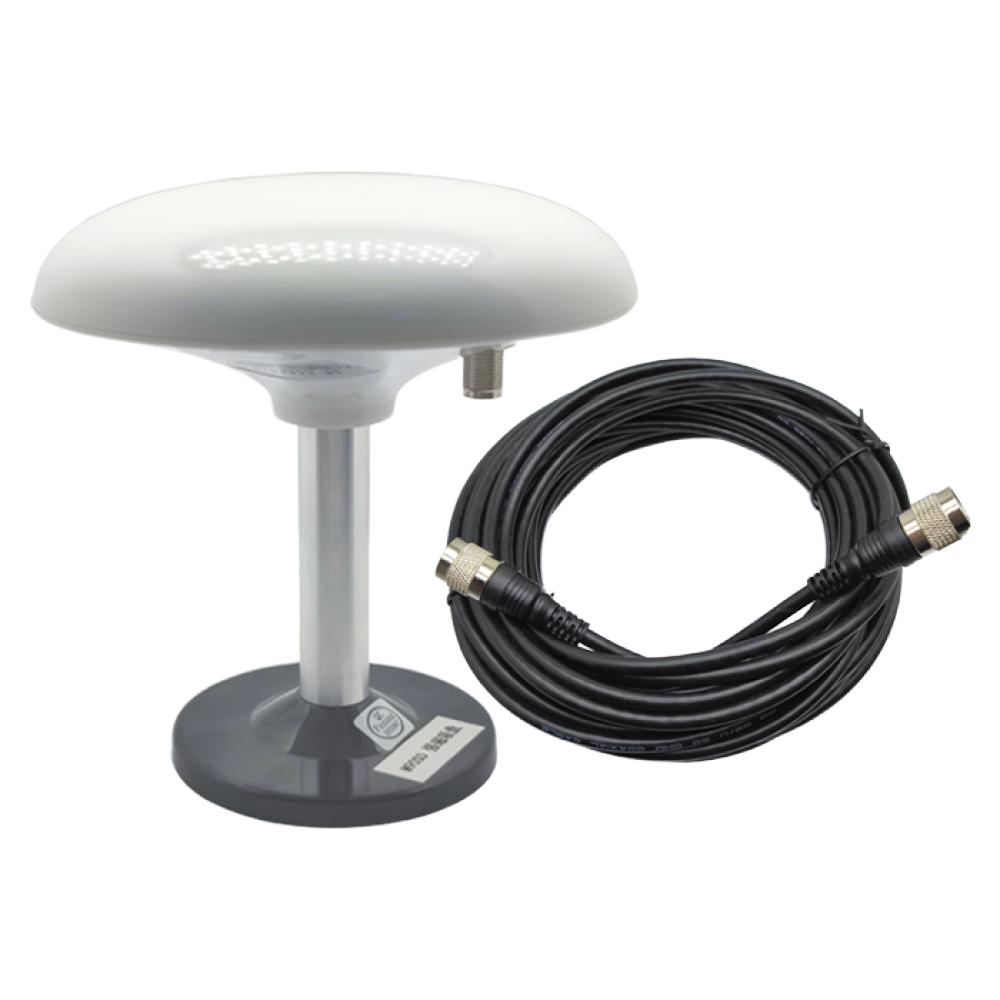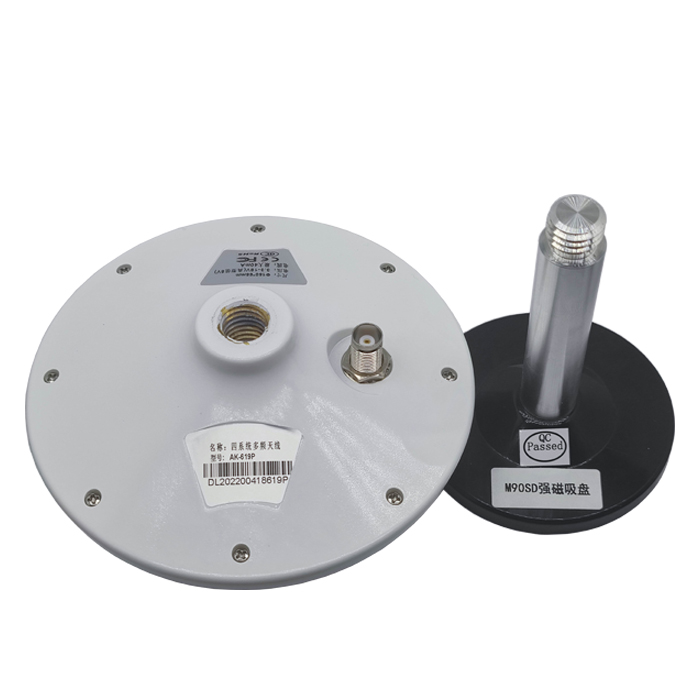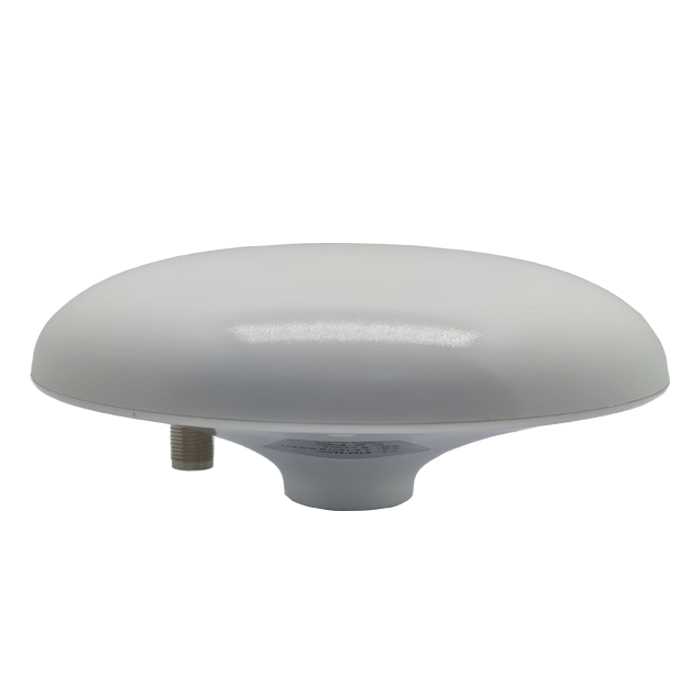Full Band GNSS Antenna functionality
At the core of its functionality lies the extensive frequency coverage, spanning 690-960MHz and 1710-5000MHz, which positions the antenna to support a multitude of wireless standards. The lower band (690-960MHz) encompasses critical frequencies for 4G LTE, GSM, and IoT (Internet of Things) applications, while the higher band (1710-5000MHz) includes 5G NR (New Radio) spectrums, Wi-Fi 6, and various GNSS help bands. This full-band capability eliminates the need for multiple antennas, simplifying system design and reducing installation complexity for 5G routers and CPE terminals. For outdoor base stations, which must handle simultaneous voice, data, and navigation signals, this broad frequency range ensures compatibility with evolving network standards, future-proofing infrastructure investments. Whether transmitting high-speed 5G data or receiving precise GNSS positioning signals, the antenna’s ability to operate across these bands without significant performance degradation underscores its versatility.
Complementing its frequency range is the support for 5 bands, a configuration that optimizes performance for specific sub-bands within the broader spectrum. Each band is tuned to minimize interference and maximize signal integrity, ensuring that 5G routers can maintain stable connections even in crowded RF environments. For example, one band may focus on the 3.5GHz mid-band 5G spectrum, which balances coverage and capacity, while another targets the 2.4GHz Wi-Fi band for local area connectivity. This multi-band design allows the antenna to dynamically switch between frequencies based on network conditions, prioritizing bands with less congestion or stronger signals. In CPE terminals, this translates to consistent broadband speeds for residential or industrial users, even as network loads fluctuate throughout the day. For outdoor base stations, the 5-band configuration enables efficient management of multiple user devices, from smartphones to IoT sensors, without sacrificing signal quality.
The antenna’s gain of 2.0 dBi, while modest compared to high-gain directional antennas, is strategically chosen to balance coverage and efficiency in omnidirectional applications. Gain, measured in dBi (decibels relative to an isotropic radiator), indicates the antenna’s ability to focus signal energy. A 2.0 dBi gain ensures uniform signal distribution in all directions—critical for 5G routers and base stations that must serve multiple devices across a wide area. Unlike directional antennas, which concentrate signals in a specific beam, this omnidirectional design eliminates coverage dead zones, making it ideal for urban neighborhoods, industrial parks, or rural areas where devices may be scattered. The gain is optimized across all 5 bands, ensuring that even in the higher 5000MHz range—where signal attenuation is greater—the antenna maintains sufficient power to reach distant devices. This balance between gain and radiation pattern is key to its effectiveness in diverse deployment scenarios.
Impedance of 50 ohms and VSWR (Voltage Standing Wave Ratio) of ≤2.0 are fundamental to the antenna’s efficient integration with wireless systems. Impedance matching between the antenna, coaxial cable, and connected devices (such as 5G routers) is critical for maximizing power transfer and minimizing signal reflection. A 50-ohm impedance aligns with industry standards for RF equipment, ensuring compatibility with most CPE terminals and base station hardware. The VSWR of ≤2.0 indicates that at least 90% of the transmitted power is transferred to the air, with minimal reflection back to the source. This high efficiency reduces energy waste and prevents potential damage to transmitter components caused by reflected power. In practical terms, this means that 5G routers equipped with this antenna can transmit data over longer distances with fewer dropouts, while base stations can maintain stable connections with a larger number of devices.
Return loss of ≥10 dB further validates the antenna’s impedance matching performance. Return loss measures the amount of power reflected back from the antenna, with higher values indicating better matching. A return loss of 10 dB or more means that less than 10% of the power is reflected, ensuring that the majority is radiated effectively. This is particularly important in 5G systems, where high data rates require efficient use of available power. Poor return loss can lead to signal distortion, reduced throughput, and increased interference with neighboring bands. By maintaining a return loss of ≥10 dB across its frequency range, the antenna ensures that 5G routers and base stations operate at peak efficiency, delivering the low latency and high bandwidth that modern applications demand.
antenna’s physical design
The antenna’s physical design emphasizes durability and flexibility, starting with its IP54 ingress protection rating. IP54 certification ensures resistance to dust ingress (limited dust penetration that does not impair functionality) and water splashes from any direction—critical for outdoor installations such as base stations or exterior-mounted CPE terminals. This protection safeguards internal components, including the radiating elements and connectors, from environmental damage, ensuring reliable operation in rain, snow, or dusty conditions. For 5G routers deployed in industrial settings, where exposure to debris is common, or outdoor base stations in harsh climates, this ruggedness extends the antenna’s lifespan and reduces maintenance requirements.
Installation flexibility is enhanced by the vertical mount design, which includes both a magnet and screw hole. The magnetic base allows for quick, tool-free mounting on metal surfaces such as rooftop equipment enclosures, utility poles, or the exterior of industrial buildings. This is particularly valuable for temporary deployments or locations where drilling is impractical. For permanent installations, the screw hole enables secure fixation to non-metallic surfaces, ensuring stability even in high winds or vibrational environments (such as near heavy machinery). This dual mounting option simplifies deployment across diverse scenarios, from urban rooftops hosting 5G routers to remote base stations in rural areas. The vertical orientation optimizes the radiation pattern, ensuring that signals are distributed horizontally across the coverage area, which is ideal for serving ground-level devices.
The connector type—a SMA male—further enhances compatibility with existing equipment. SMA (SubMiniature version A) connectors are widely used in RF applications due to their compact size and reliable performance. The male SMA connector mates seamlessly with female SMA ports on 5G routers, CPE terminals, and base station transceivers, ensuring a low-loss connection. This standardization simplifies integration, allowing network operators to retrofit existing infrastructure with the antenna without costly modifications. The connector is designed to withstand repeated mating cycles, making it suitable for field installations where equipment may need to be reconfigured or replaced.
Cabling is a critical element of signal integrity, and the antenna features an LMR100 low-loss coaxial cable measuring 1.63m in length. LMR100 is a high-performance cable designed for minimal signal attenuation, even at high frequencies (up to 5000MHz). This is essential for maintaining signal strength between the antenna and the connected device, especially in 5G systems where higher frequencies are more susceptible to loss. The 1.63m length strikes a balance between flexibility and performance: long enough to allow for optimal antenna placement (e.g., mounting on a rooftop while connecting to a router indoors) without introducing excessive loss. For CPE terminals installed on building exteriors, this cable length ensures that the antenna can be positioned for maximum signal reception while keeping the router safely indoors. The coaxial design, with its braided shield, also provides excellent EMI (Electromagnetic Interference) resistance, preventing noise from nearby electronics or power lines from disrupting signals.
Linear polarization is a deliberate design choice that aligns with the requirements of 5G and GNSS applications in fixed installations. Unlike circular polarization, which is better suited for mobile devices with varying orientations, linear polarization (either vertical or horizontal) offers higher efficiency when both the antenna and connected devices maintain a consistent orientation. In fixed deployments such as base stations or rooftop 5G routers, the vertical polarization of this antenna ensures optimal signal coupling with user devices, which typically use vertically polarized antennas. This alignment maximizes signal strength and reduces fading, particularly in line-of-sight scenarios. While linear polarization is more susceptible to multipath interference than circular polarization, the antenna’s omnidirectional pattern and low-loss design mitigate this effect in most urban and suburban environments.
The antenna’s maximum input power of 50W ensures it can handle high-power transmissions from base stations and industrial-grade 5G routers. This high power rating is critical for outdoor base stations, which often operate at higher transmit powers to cover large areas. It also provides a safety margin to accommodate transient power spikes, preventing damage to the antenna during system faults or peak usage periods. For CPE terminals, which typically operate at lower powers, the 50W rating ensures compatibility without compromising performance, making the antenna a versatile choice across different device types.
applications
In practical applications, the Full Band GNSS Antenna excels in 5G routers, CPE terminals, and outdoor base stations, each with unique requirements. For 5G routers deployed in residential or small business settings, the antenna’s omnidirectional pattern ensures consistent coverage throughout the premises, eliminating dead zones and supporting multiple devices simultaneously. The IP54 rating allows for outdoor mounting, extending coverage to gardens or outdoor workspaces. In industrial environments, where CPE terminals connect machinery and sensors, the antenna’s rugged design and low-loss cabling ensure reliable connectivity even amid EMI from heavy equipment.
Outdoor base stations benefit most from the antenna’s full-band support and high power handling. By covering 690-960MHz and 1710-5000MHz, they can serve legacy 4G devices alongside 5G NR users, facilitating the transition to next-generation networks. The dual mounting options simplify deployment on towers, rooftops, or utility poles, while the IP54 protection ensures year-round operation in diverse climates. The antenna’s ability to maintain efficiency across all 5 bands allows base stations to dynamically allocate resources, prioritizing critical applications such as emergency services or industrial automation.
Looking ahead, as 5G networks expand to support advanced technologies like autonomous vehicles, smart cities, and the Industrial Internet of Things (IIoT), the demand for versatile, high-performance antennas will grow. The Full Band GNSS Antenna’s ability to cover a broad frequency range, withstand harsh environments, and integrate with existing infrastructure positions it as a key enabler of these innovations. Its support for both 5G and GNSS signals—critical for location-aware applications—makes it particularly valuable in smart city deployments, where precise positioning and high-speed communication are equally important.
In conclusion
-
In conclusion, the Full Band GNSS Antenna represents a harmonious blend of versatility, durability, and performance, tailored to meet the demands of modern wireless ecosystems. Its extensive frequency coverage, multi-band design, and efficient signal handling ensure compatibility with 5G, GNSS, and legacy standards, while its rugged construction and flexible mounting options simplify deployment in any environment. Whether powering a 5G router in a suburban home, a CPE terminal in an industrial plant, or an outdoor base station in a remote region, this antenna delivers reliable connectivity that forms the backbone of our interconnected world. As technology continues to evolve, its adaptability and robust feature set will ensure it remains a vital component in the next generation of communication networks.




































































 Language
Language
 En
En Cn
Cn Korean
Korean

 Home >
Home > 







 18665803017 (Macro)
18665803017 (Macro)













